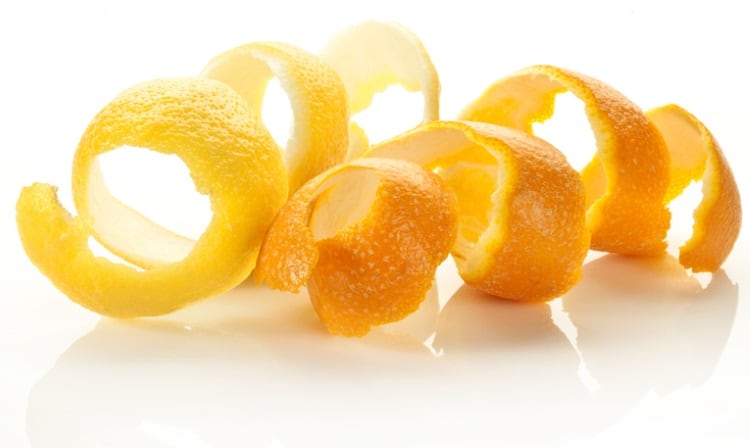Bread is the most popular food consumed daily so it makes sense to enrich it with a bioactive compound like dietary fiber to increase the global population’s fiber intake.
In recent years, dietary fiber from fruits – and especially citrus fruits – has received increasing attention from researchers due to their considerable beneficial effects on the human body, including stress relief, improved skin tone, digestive ailments, heart health and cancer prevention.
According to a 2013 study, Romanian scientists noted that fiber from oranges, lemons and grapefruits are rich sources of dietary fiber in a well-balanced proportion of soluble and insoluble fiber. Citrus fiber also has a higher proportion of soluble fiber (33%) – which cannot be digested by human digestive enzymes – than wheat fiber (7%).
Additionally, the naturally sourced fiber has the advantage of the presence of bioactive compounds like flavonoids, polyphenols and vitamin C, which exert further health-promoting effects in addition to those of the dietary fiber itself.

The growth in the use of citrus fiber is evident in a recent report from Global Market Insights (GMI), which stated the global citrus-based fiber market was valued at over $1.2bn in 2017 and is anticipated to grow at over 6% to 2024.
Natural replacement
Driving that growth is the rising demand from bakery, food preserves and dairy applications for the fiber’s improved gelling, thickening, stabilizing, and water binding capabilities.
High usage as fat replacers will support product scope among bakery applications.
Additionally, favourable government regulations towards improving nutrition content and using citrus fiber to replace artificial ingredients will support industry expansion.
However, fluctuating citrus peel costs and the uneven geographical distribution of raw material resources, along with the availability of a large number of substitutes, are major factors influencing industry growth.
Key players in this market – including Cargill, Ceamsa and Florida Food Products – are actively developing cost-efficient formulations for citrus fibre-added food products.
Antioxidant dietary fiber
“Citrus fiber is gaining popularity as a natural specialty food ingredient, which is commonly used as an emulsifier and water-binding agent in various food products such as bakery,” said Sanjeevani Dubey, lead analyst at US-based global market intelligence agency, Fact.MR.
“As modern consumers are becoming highly scrupulous about ingredients of packaged food products before making a purchase, a burgeoning number of food manufacturers are replacing fats and artificial ingredients with citrus fiber.”
According to scientists from Ştefan cel Mare University of Suceava, citrus fiber can labelled as an antioxidant dietary fiber, allowing bakers to capitalize on the growing demand for clean label.
Citrus fibers are neutral in taste, flavor and odor and their addition improves the texture and taste of final products.
They are also low in fat and digestible carbohydrates with a low calorie content.
More baked goods producers are adopting citrus fiber to replace egg or oil, as it provides natural emulsification and better functionality.
A study conducted by researchers from the Slovak Technology University of Bratislava found that grapefruit powder also exhibited good hydration properties – that is water holding, water retention and swelling capacity – whereas its fat absorption capacity and emulsifying activity were low.
Bitter taste
However, biscuits containing more than 5% of grapefruit powder decreased dough stability and mixing tolerance. The biscuits physical characteristics – volume, width, thickness and spread ratio – also decreased with increasing levels of grapefruit powder, while overall acceptance was lowered, presumably due to the high intensity of bitter taste and increased hardness of the biscuits.
The Romanian study found similar results in the preparation of bread, with higher amounts of citrus fiber disrupting the starch-gluten matrix and sometime causing negative effect on the finished bread quality.
However, a study conducted by Mexican scientists found that muffins containing a dietary fiber-rich orange bagasse product (DFROBP) had a lower glycaemic index and did not affect the sensory outcome. Therefore, they concluded the addition of DFROBP to bakery products can be an alternative for people requiring low glycaemic response.
Studies:
Effect of Citrus Fibers Addition on Wheat Flour Dough
Food and Environment Safety
S. Mironeasa, G.G. Codinȃ
Volume XII, Issue 4 – 2013, pag. 322 - 327
Acta Alimentaria
Z. Kohajdová, J. Karovičová, M. Lauková
42. 91-101. 10.1556/AAlim.42.2013.1.9
International Journal of Molecular Sciences
M.R. Romero-Lopez, P. Osorio-Diaz, et al
2011; 12(4): 2174–2186


